|
Index...
|
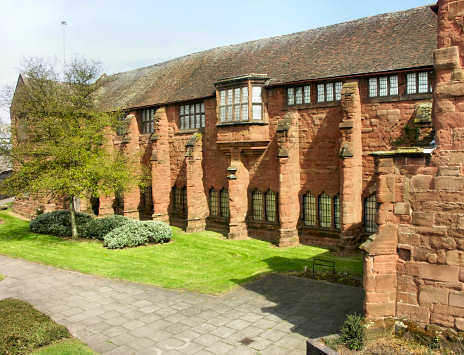
 t was from the Oriel window in the photograph on the left that Queen Elizabeth I addressed the people of Coventry in 1565. The words of her speech were unfortunately never fully recorded but it is thought that it might have been to lecture the townsfolk about their frivolous attitude towards religion.
t was from the Oriel window in the photograph on the left that Queen Elizabeth I addressed the people of Coventry in 1565. The words of her speech were unfortunately never fully recorded but it is thought that it might have been to lecture the townsfolk about their frivolous attitude towards religion.
Although a brief highlight in the building's history, this Royal visit came only a short while after the lowest point for the Carmelite monastery. The Coventry order was founded in 1342, and gradually expanded as charitable donations and funding became available. The friars survived by providing shelter to the needy and passing travellers, and also by preaching enthusiastically to the townsfolk, with whom they appear to have had a good relationship.
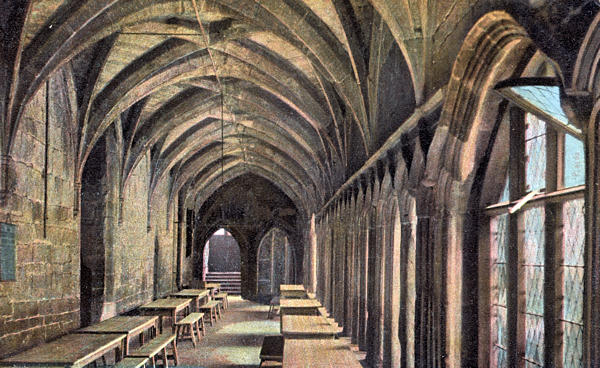
Right: A view of the east range of the cloisters from the 1920s
The buildings were originally far more extensive, and the building that you can see pictured here is only the east side of the cloisters - but a small fragment of the original array.
Directly after the dissolution, Whitefriars' ended up in the hands of John Hales, after whom a Coventry street was named in 1848. Hales was an MP, and was also responsible for collecting church revenues for King Henry VIII, (a role known as "Clerk of the Hanaper") which put him in an advantageous position for purchasing prime properties that had been 'dissolved'. After gaining Whitefriars' he set about the alterations. The remaining structure that still stands became his main residence. However, this was previously only the east side of a square cloister range - the opposite side and most of the north and south sides being demolished so that the garden became his forecourt. Also, he extended the property to the south (towards Gulson Road) but none of this addition remains.
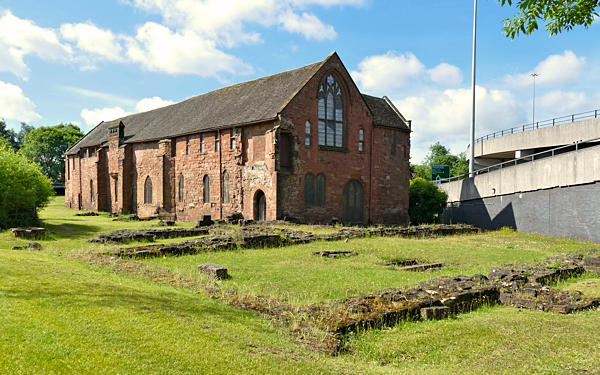
Hales was not a particularly liked man in Coventry. He was known as "Clubfoot Hales" owing to a disbility, and the locals probably objected to a rich outsider coming along and taking over previously important parts of the town's heritage. It might have been the case that locals feared Hales to be a property speculator, whose intention would be to buy Coventry properties with a view to selling on for profit.
However, the townsfolk need not have feared, because Hales actually left the city with quite a rich legacy. It was from the church of the Whitefriars' monastery that he founded the grammar school that was to be named King Henry VIII's School. From its foundation on the 23rd July 1545 until 1557 the choir of the old Carmelite church was used for schooling the pupils, but while Hales was abroad in 1557, the Corporation took possession of the Whitefriars' church for use as a parish church. Nine years later, it was realised that Coventry already had an abundance of parish churches, so the building was sold, and then in 1572, demolished. John Hales returned a year later, and so in 1558 he moved King Henty VIII's Grammar School to the former Hospital of St. John; the building we all know now as the Old Grammar School.
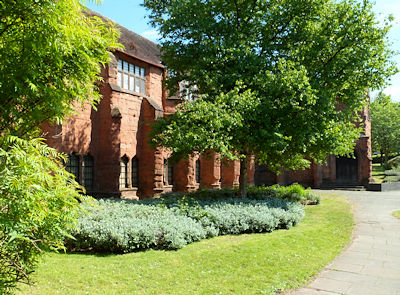
From 1801 the monastery was employed as the Coventry Workhouse. Initially the Coventry authorities ran the "House of Industry" in quite a benevolent manner, giving "out-relief" to poor outside the house as well as work, clothing and food to the poor within. However, the Poor Law act of 1834 tightened up on such "inefficiencies" and a much harsher regime was to ensue. Conditions were extremely undesirable for inmates - even married couples were separated to avoid unaffordable offspring. About the only positive thing to emerge from all this was the infirmary built in 1889 which eventually became the Gulson Road Hospital.
Its use as a workhouse came to an end with the close of the second world war, which also brought the beginnings of the Welfare State. The monastery now stands as a museum, silently alone next to the ring road close to the Gulson Road / London Road junction.
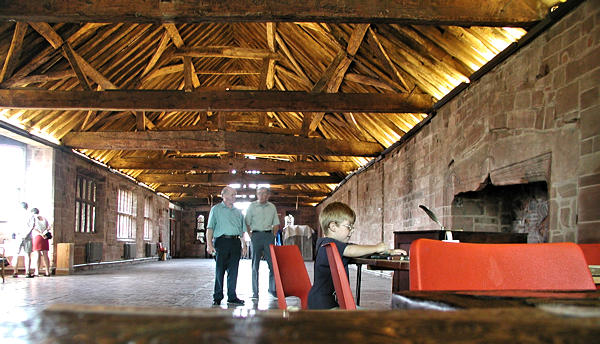
Website by Rob Orland © 2002 to 2025